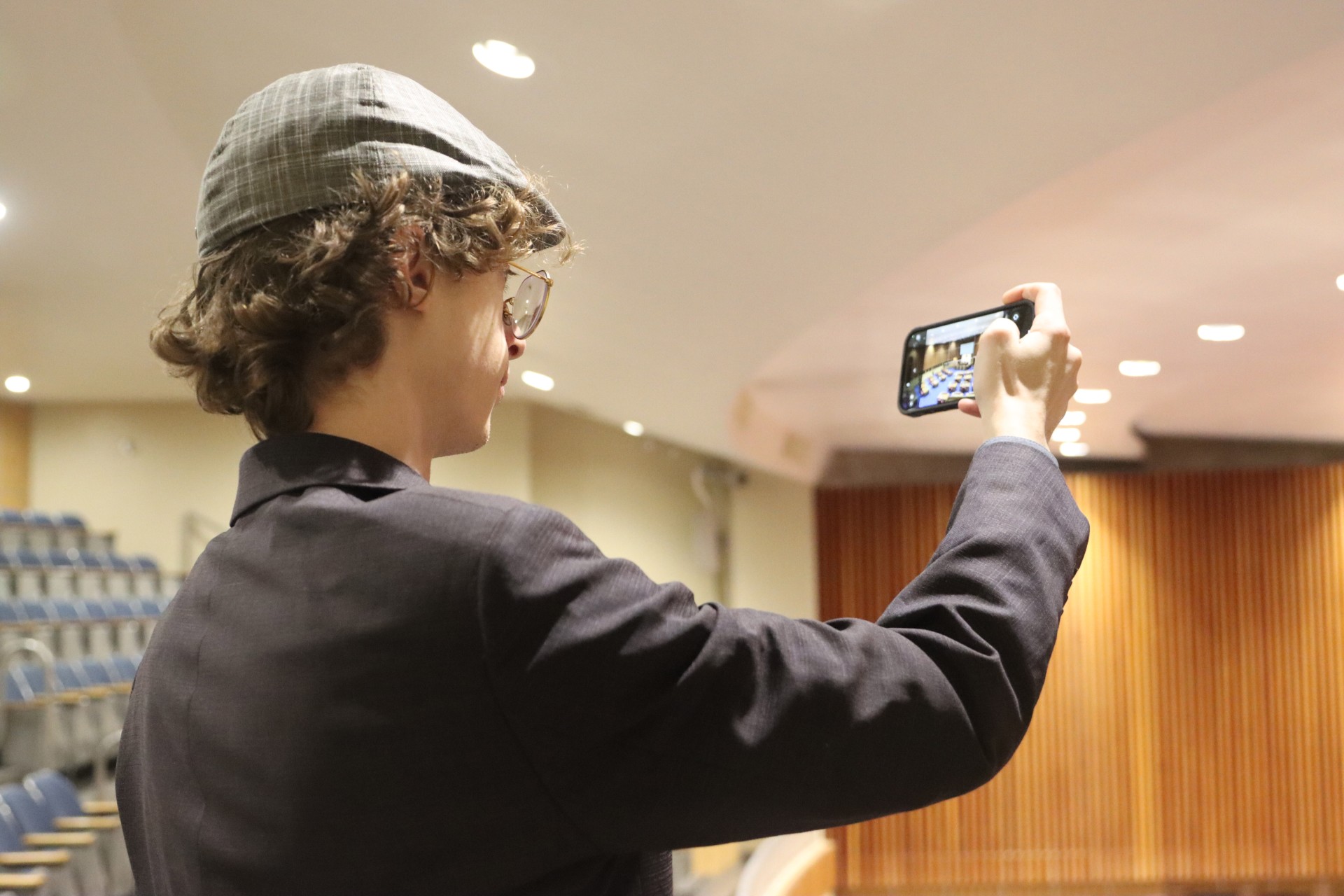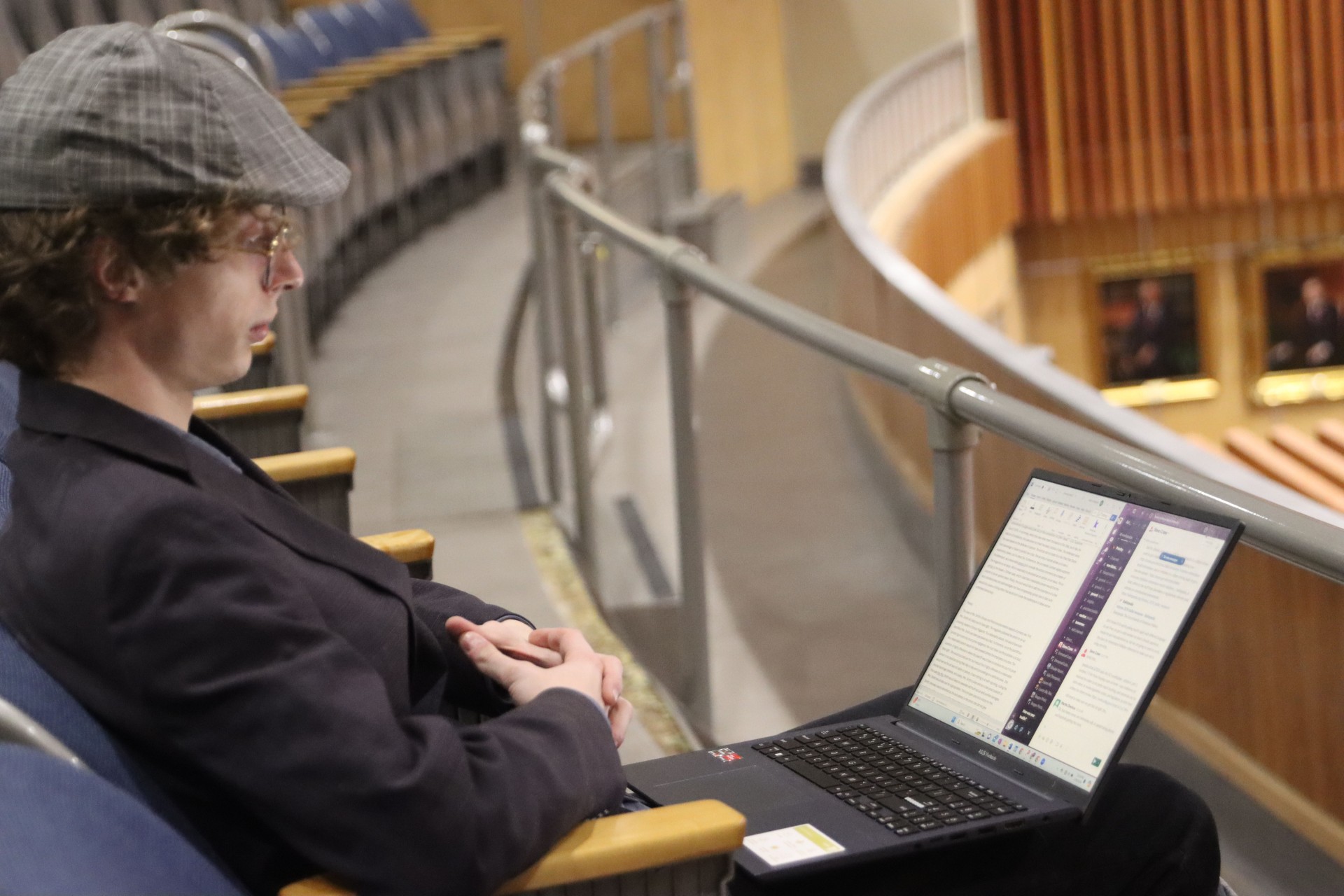By Alexa Lewis
From the Arizona statehouse to the nation’s capital, Arizona State University students are reporting on the issues that matter to their readers.
Arizona State University has offered journalism classes since 1931, and the program has grown exponentially since then. The Walter Cronkite School of Journalism and Mass Communication became an independent unit of ASU and an integral part of the school’s new Phoenix campus in 2005. Later, Chris Callahan arrived from the University of Maryland as the Cronkite School’s new dean, eventually establishing newspaper partnerships and Cronkite reporting bureaus in Phoenix, Washington, and Los Angeles. Today, students report on issues affecting Arizona residents from these three bureaus, and Cronkite News airs on Arizona PBS.
In the past, statehouse reporting was just one piece of what politics beat reporters would cover in the Cronkite News class—a capstone class for upperclassmen majoring in journalism, as well as master’s students. Now, more focus is being placed on statehouse reporting as news organizations struggle to fill growing reporting gaps in legislatures nationwide. This semester, three digital reporters have been assigned specifically to cover the state legislature in Phoenix, and one has been assigned to Capitol Hill in Washington.
“We wanted to make a more concentrated effort around statehouse reporting,” said Julia Thompson, professor of practice and managing editor for Cronkite News. “Those three reporters have really elevated our statehouse coverage this semester, and one of our editors at a partner paper recently commented on how we’ve stepped up our statehouse reporting. We’re definitely covering a lot of things we wouldn’t be covering if we didn’t have dedicated statehouse reporters.”
 Student journalism at Cronkite have a wide reach, filling reporting gaps and making a real-world impact. Every day, Cronkite News sends a digest of their student-driven journalism out to a network of more than 170 partner publications. These partners include every daily news publication in Arizona, several in Colorado, and one in Montana. In addition to these partner publications, student stories are published to the Cronkite News website, which is available to the public.
Student journalism at Cronkite have a wide reach, filling reporting gaps and making a real-world impact. Every day, Cronkite News sends a digest of their student-driven journalism out to a network of more than 170 partner publications. These partners include every daily news publication in Arizona, several in Colorado, and one in Montana. In addition to these partner publications, student stories are published to the Cronkite News website, which is available to the public.
“We function like The Associated Press in that regard,” said Steve Crane, professor of practice and director of Washington operations for Cronkite News. “We send out the stories and [our partner papers] use them or they don’t. Everything we offer is free.”
While a major function of the Cronkite News class is filling reporting gaps with student journalism, the primary goal of the program is educating the next generation of journalists. Students covering politics in the Phoenix statehouse and on Capitol Hill obtain an authentic newsroom experience, and have the opportunity to learn about the political complexities of the statehouse and Congress.
“First and foremost, our mission is education. We want to help the students develop when it comes to reporting on legislative issues. We took a group of students reporting on legislative issues to the Capitol at the beginning of the semester… they learned a lot about processes and procedures that can be discouraging if you’re not familiar with that kind of reporting,” Thompson said.
Students in the Cronkite News class produce stories involving rigorous field research and data analysis. Statehouse reporters cover public meetings, hearings, and press conferences; they also collect data, and break news that is relevant to Arizona audiences. These students take on challenges from interviewing public officials to manually creating spreadsheets hundreds of columns wide to analyze proxy voting trends.
“I’m really proud of that proxy voting story. That was a ton of work,” Crane said. “We actually found that our Arizona representatives were among the ones proxy voting the most.”
Political beat reporters for Cronkite News stay tuned in on issues that impact Arizona on both a local and national scale, creating more well-rounded coverage of Arizona politics than would be possible without student journalism.
“If someone cares enough about something to come all the way from Arizona to DC to protest it, we’re here to talk to them, and I think that’s important,” Crane said. “In the DC bureau, our joke is that we’re the largest Arizona-based news gathering operation, because we’re the only Arizona-based news gathering operation here.”

